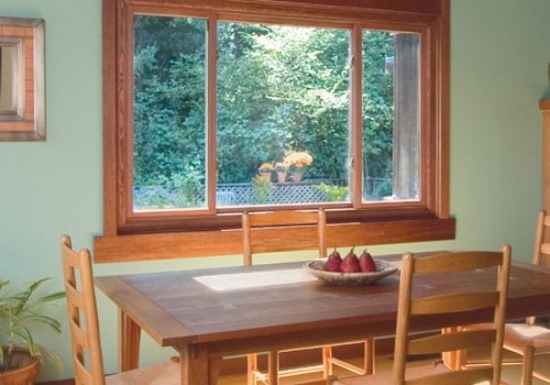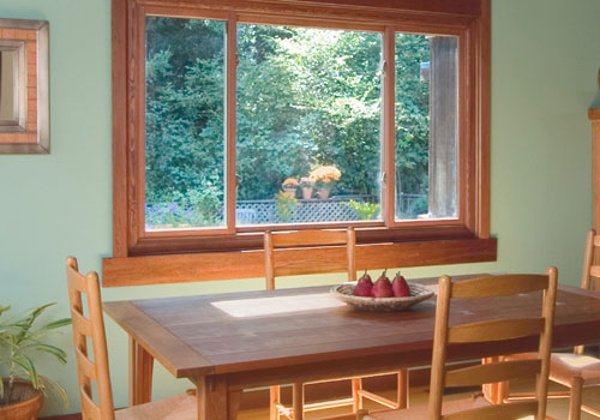


If you look at an energy efficient window and an older, less-efficient window, you’ll see that they don’t look much different. So how does one window do such a great job of keeping cold air inside inside your home while the other one drives up your air conditioning bills? To better understand how energy efficient windows work, we need to delve into the science of emissivity and heat transfer — two properties that window manufacturers minimize in order make windows more energy efficient all year long.
How Heat is Lost Through Windows
When one side of the glass is warmer than the other, a certain portion of that heat is absorbed by the glass and then eventually transferred to the other side. There are two properties that affect the degree to which this happens: emissivity and R-value.
The term “R-value” refers to the window’s ability to resist heat transfer, or in other words, its thermal resistance. R-value is essentially a measure of how long it takes an item –in this case the window– to absorb as much heat as it can and begin passing that heat out the other side. One way to make windows more energy efficient is to increase the R-value.
The term “emissivity” refers to how much heat is absorbed by the glass surface versus being reflected away. A high emissivity, such as 0.95, indicates that most heat that comes into contact with the window is absorbed. A lower emissivity, such as 0.10, indicates that more heat is reflected and less is absorbed. So, window manufacturers aim to lower emissivity to make windows more energy efficient.
Increasing Thermal Resistance
There are a couple of ways window manufacturers increase the insulating capacity, or R-value, of
windows. One is by using multiple glass panes rather than a single pane. It takes longer for heat to pass through two glass than through one glass pane. Double-pane windows are ideal in most areas. Triple-pane windows slow heat transfer even further and are a good choice in areas with particularly warm summers, like Indianapolis.
The air between the multiple panes of glass is what slows down the heat transfer. To increase the R-value even further, window manufacturers can replace the air between the panels with another gas that is even less effective at transferring heat. Argon and krypton gas are the most common choices.
Decreasing Emissivity
The other way to make more energy efficient windows is by increasing the amount of heat that is reflected rather than being absorbed — or in other words, decreasing the emissivity. This is typically achieved by coating the windows with a reflective substance, such as a thin layer of silver or tin dioxide. This low-e coating is typically so thin that you can’t see it on the glass.
By reducing the amount of heat that’s even absorbed by the glass, you increase the time it takes the window to absorb the maximum heat and start transferring it to the other side. So, effectively low-e coatings, like those used on Andersen’s SmartSun™ glass, make the high R-value glass even more effective at stopping heat transfer.
Increasing the R-value and decreasing the emissivity of windows reduces the amount of heat that’s transferred into your home during the summer, which keeps your AC bills in check.
Just as you can’t tell a book by its cover, you can’t tell energy efficient windows by their appearance. So, pay close attention to the R-value and emissivity when choosing replacement windows. Contact Renewal by Andersen to learn more about our energy efficient window options for your Indianapolis home.